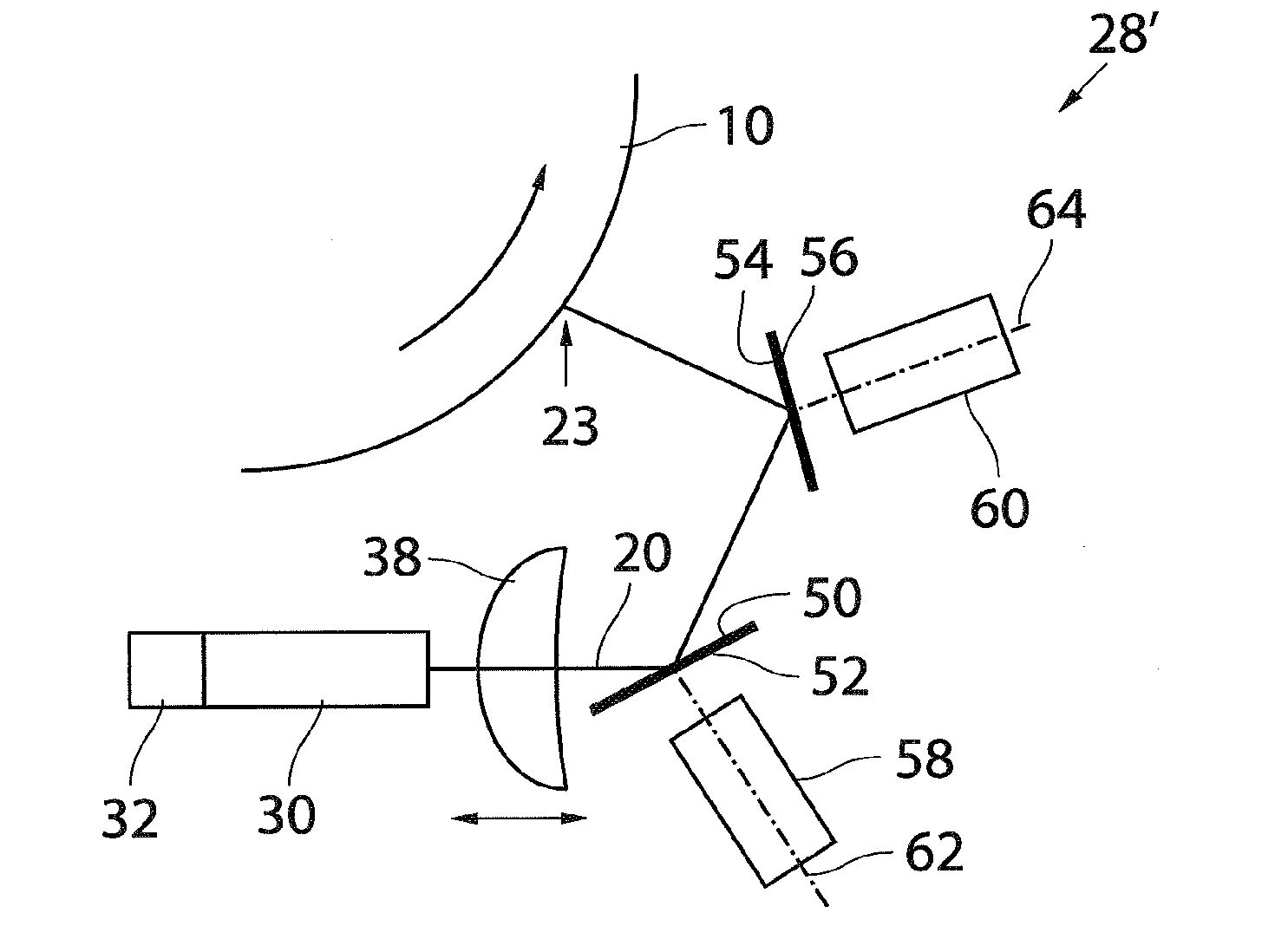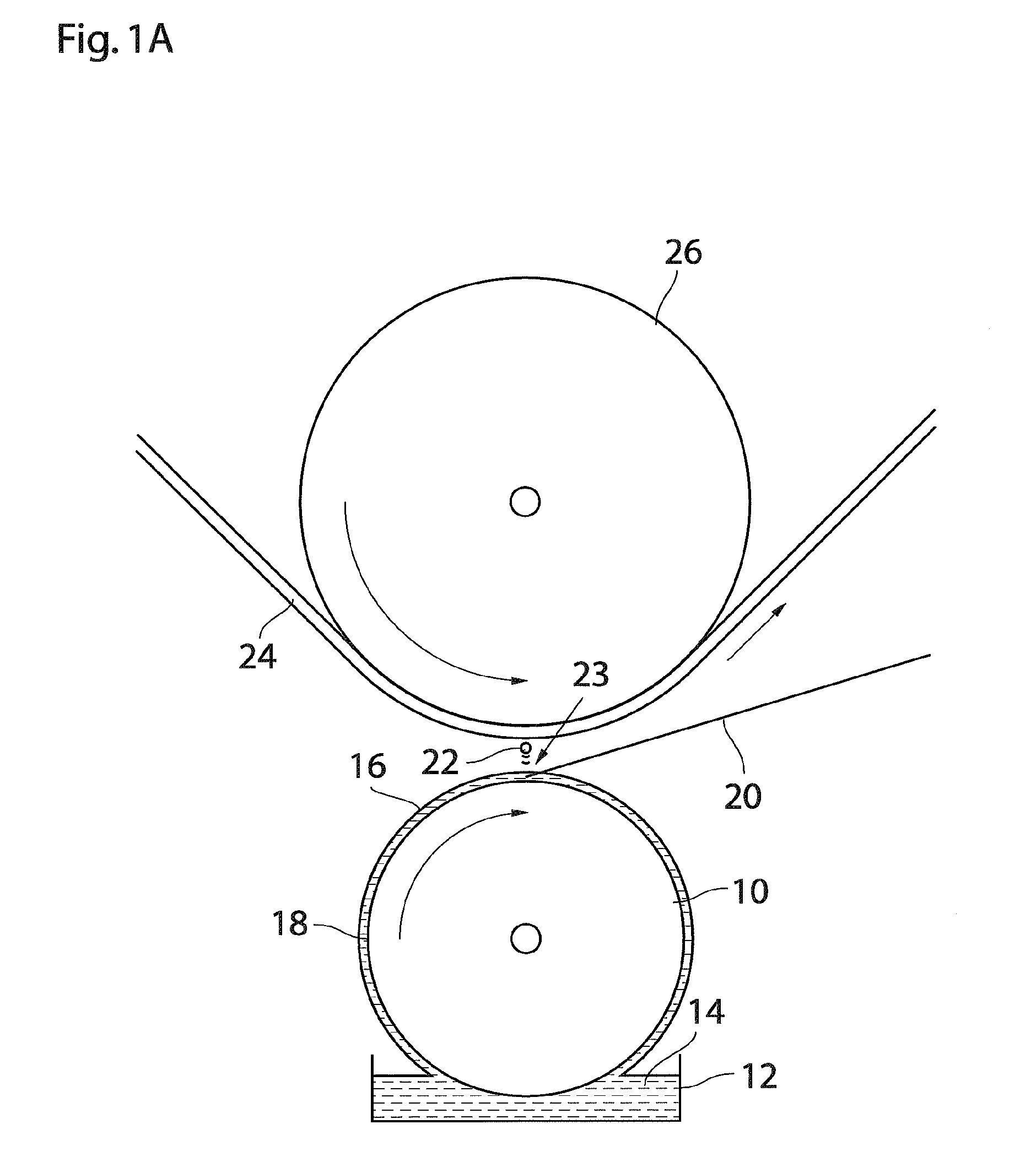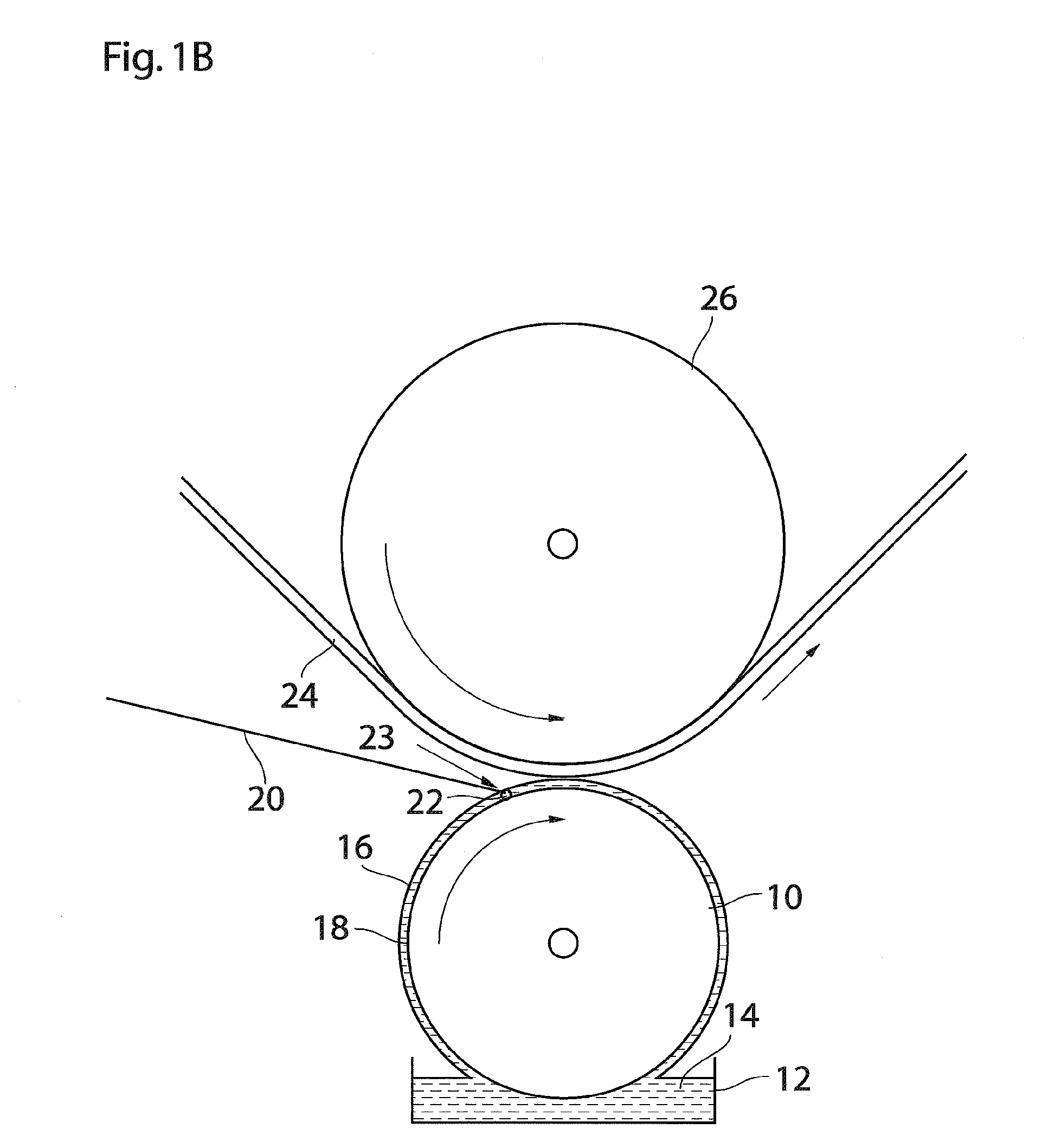Inkjet print engine having a plurality of laser scanning units
a laser scanning unit and printing engine technology, applied in the field of printing, can solve the problems of affecting the printing quality of neighboring dots in the main scanning direction, limiting the printing quality, and affecting the printing quality, so as to reduce the scanning speed, minimize shock wave interference, and avoid shock wave interference between the different laser beam spot positions
- Summary
- Abstract
- Description
- Claims
- Application Information
AI Technical Summary
Benefits of technology
Problems solved by technology
Method used
Image
Examples
Embodiment Construction
[0049]The present invention will now be described with reference to the accompanying drawings, wherein the same reference numerals have been used to identify the same or similar elements throughout the several views.
[0050]FIG. 1A schematically shows a cylindrical ink support 10 of a printing engine, which is rotatable about its axis as indicated by an arrow. An ink supply 12 is adapted to supply ink 14 to the ink support 10, thereby forming a homogeneous and continuous amount of ink 16 on a cylindrical outer surface 18 of the ink support 10. The ink 14 is, for example, flexographic or rotogravure ink.
[0051]A surface 18 of the ink support 10 is scanned by a plurality of laser beams, of which one laser beam 20 is shown in FIG. 1A, in substantially a main scanning direction which is perpendicular to the plane of view in FIG. 1A. When the laser beam 20 hits the ink support 10 at a higher power level, ink is locally heated or vaporized, and a jet 22 of ink is created at the laser beam sp...
PUM
 Login to View More
Login to View More Abstract
Description
Claims
Application Information
 Login to View More
Login to View More - R&D
- Intellectual Property
- Life Sciences
- Materials
- Tech Scout
- Unparalleled Data Quality
- Higher Quality Content
- 60% Fewer Hallucinations
Browse by: Latest US Patents, China's latest patents, Technical Efficacy Thesaurus, Application Domain, Technology Topic, Popular Technical Reports.
© 2025 PatSnap. All rights reserved.Legal|Privacy policy|Modern Slavery Act Transparency Statement|Sitemap|About US| Contact US: help@patsnap.com



